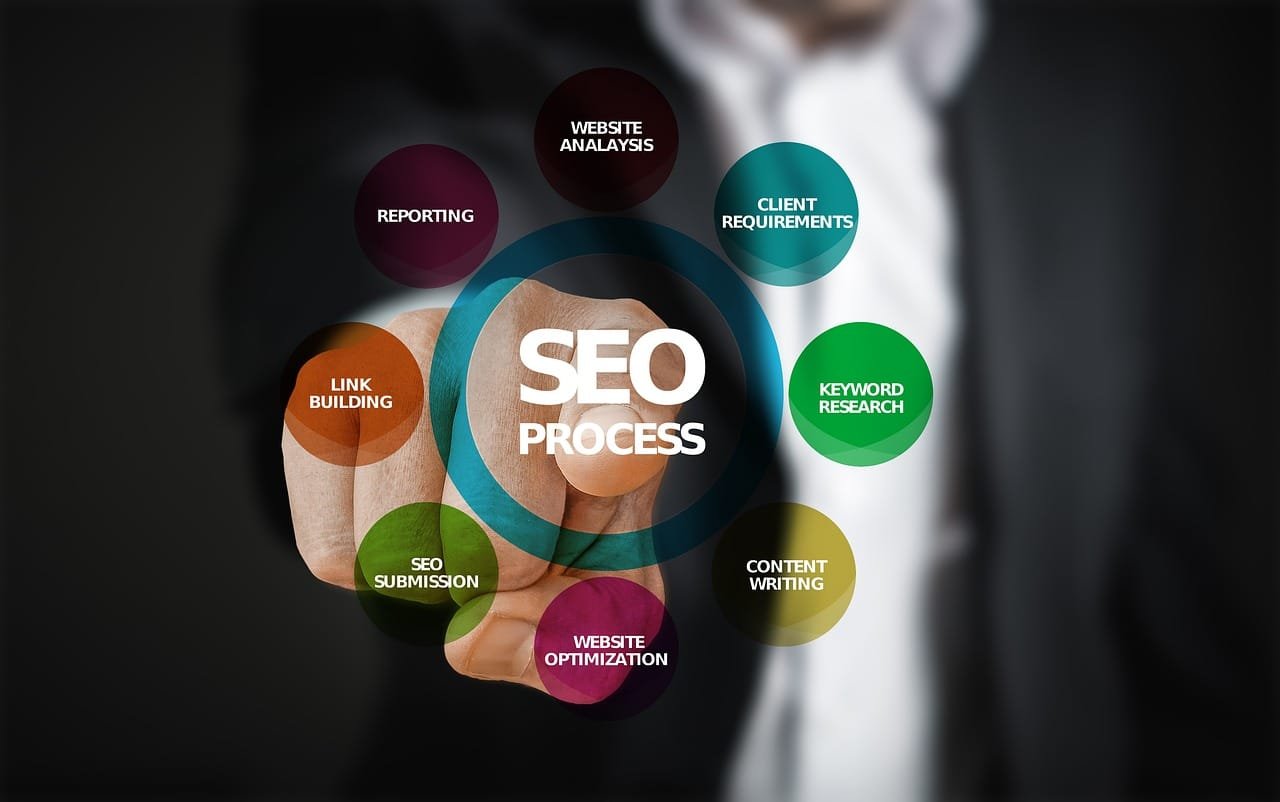This Article has been revised, edited and added to, by Poulomi Chakraborty.
- Why SEO Matters for B2C Businesses
- The Core Elements of SEO for B2C Businesses
- Off-Page SEO: Building Authority and Trust
- Content is King: Crafting SEO-Friendly Content
- Technical SEO: The Backbone of a Successful Strategy
- Site Speed: Enhancing User Experience
- Mobile-Friendliness: Catering to Mobile Users
- Secure Sockets Layer (SSL): Building Trust and Security
- XML Sitemaps and Robots.txt: Guiding Search Engines
- Structured Data: Enhancing Search Engine Understanding
- Monitoring and Maintaining Technical Health
- Adapting to Algorithm Changes
- Local SEO: Capturing the Local Market
- Google My Business: Your Local SEO Hub
- NAP Consistency: Ensuring Accurate Business Information
- Local Keywords: Targeting Local Searchers
- Local Citations: Building Local Authority
- Online Reviews: Building Trust and Credibility
- Local Content: Engaging with Your Community
- Mobile Optimization: Reaching Local Searchers on the Go
- Tracking and Analyzing Local SEO Performance
- Conclusion: Embracing SEO for B2C Success
In the digital age, businesses are constantly striving to stand out in a crowded online marketplace. For Business-to-Consumer (B2C) companies, this challenge is even more pronounced. Competing for the attention of individual consumers, who are often inundated with a plethora of choices, necessitates a robust and effective online presence. This is where Search Engine Optimization (SEO) comes into play. SEO is not just a buzzword; it’s a fundamental component of digital marketing that can significantly impact a business’s visibility and success.
Why SEO Matters for B2C Businesses

SEO is the art and science of optimizing your website to rank higher on search engine results pages (SERPs). For B2C businesses, SEO is crucial because it directly influences the visibility of your brand to potential customers.
When a consumer searches for a product or service that you offer, appearing on the first page of search results can make the difference between gaining a new customer and losing one to a competitor.
SEO vs. Traditional Advertising: A Comparison
To truly grasp the importance of SEO, it’s helpful to compare it with traditional advertising methods. Traditional advertising includes channels like television, radio, print media, and billboards. While these methods can reach a broad audience, they often come with significant costs and limited targeting capabilities.
Reach and Targeting
One of the primary advantages of SEO over traditional advertising is its ability to reach a highly targeted audience. When you optimize your website for specific keywords, you are effectively positioning your business in front of consumers who are actively searching for what you offer.
This is a stark contrast to traditional advertising, where you broadcast your message to a broad audience, hoping that a small fraction of them might be interested in your product or service.
SEO allows you to target specific demographics, geographic locations, and even user behavior patterns. This precision targeting ensures that your marketing efforts are more likely to convert into sales, as you are reaching consumers who have already expressed an interest in your offerings.
Cost Efficiency
Cost is another critical factor where SEO outshines traditional advertising. Traditional advertising campaigns can be expensive, with costs accumulating from buying ad space, producing commercials, and printing materials. Moreover, these costs are recurring, requiring continual investment to maintain visibility.
In contrast, SEO is a more cost-effective long-term strategy. While it requires an initial investment in terms of time and resources to optimize your website and create quality content, the ongoing costs are relatively low.
Once your site starts ranking well, the organic traffic it generates can provide a steady stream of potential customers without the need for constant financial outlays.
Measurability and Adaptability
SEO also offers superior measurability and adaptability compared to traditional advertising. With tools like Google Analytics, you can track the performance of your SEO efforts in real-time.
This includes metrics such as organic traffic, bounce rates, conversion rates, and keyword rankings. Such data-driven insights allow you to continuously refine and improve your SEO strategy.
Traditional advertising, on the other hand, often lacks this level of measurability. While you can estimate reach and impressions, it’s challenging to gauge the exact impact of a TV commercial or a billboard on your sales figures. Additionally, traditional advertising campaigns are less adaptable. Once an ad is out there, making changes can be costly and time-consuming.
Building Trust and Credibility
SEO helps in building trust and credibility with your audience. When your website consistently appears at the top of search results, it signals to consumers that your brand is a leader in your industry. High search rankings are often perceived as an endorsement by the search engine, which can enhance your brand’s credibility.
Traditional advertising, while effective in creating brand awareness, does not inherently build the same level of trust. Consumers are becoming increasingly skeptical of overt advertising and are more likely to trust organic search results and recommendations.
SEO: The Smart Choice for B2C Businesses
In summary, SEO offers a range of benefits that make it a smart choice for B2C businesses. It provides targeted reach, cost efficiency, measurable results, adaptability, and helps build trust and credibility. While traditional advertising still has its place, especially for brand awareness, integrating a robust SEO strategy can significantly enhance your online presence and drive sustainable growth.
The Core Elements of SEO for B2C Businesses

To harness the power of SEO effectively, it’s essential to understand its core elements. These components work together to improve your website’s visibility and ranking on search engines, ultimately driving more organic traffic to your site.
Keyword Research: The Foundation of SEO
Keyword research is the first step in any successful SEO strategy. It involves identifying the words and phrases that potential customers use when searching for products or services like yours. By understanding these search queries, you can optimize your website content to match what users are looking for.
Importance of Keywords
Keywords are the bridge between what people are searching for and the content you provide to fulfill that need. For B2C businesses, selecting the right keywords means you’ll be more likely to attract visitors who are interested in your offerings. This can lead to higher engagement rates and increased conversions.
Tools for Keyword Research
Several tools can assist with keyword research, each offering unique features to help you find the most relevant terms for your business:
- Google Keyword Planner: This free tool provides insights into search volume and competition for specific keywords.
- Ahrefs: A comprehensive SEO tool that offers keyword research, competitive analysis, and more.
- SEMrush: Another robust SEO tool that helps you find keywords and analyze competitors’ strategies.
- Ubersuggest: A user-friendly tool for finding keyword suggestions and search volume data.
Using these tools, you can identify high-traffic, low-competition keywords that are relevant to your business. This process ensures that your content targets terms that are both popular among searchers and attainable for your site to rank for.
On-Page SEO: Optimizing Your Content
Once you’ve identified your target keywords, the next step is to optimize your website’s content. On-page SEO refers to the practice of optimizing individual web pages to rank higher and earn more relevant traffic from search engines. This involves several elements:
Title Tags and Meta Descriptions
Title tags and meta descriptions are critical for SEO because they help search engines understand the content of your pages and influence click-through rates from search results.
- Title Tags: The title tag of a web page should be compelling and include your primary keyword. It should be concise, ideally between 50-60 characters, to ensure it displays properly in search results.
- Meta Descriptions: The meta description provides a brief summary of a page’s content. It should be around 150-160 characters and include your primary keyword and a call to action to entice users to click.
Header Tags
Header tags (H1, H2, H3, etc.) structure your content and make it easier for both users and search engines to understand. The H1 tag should contain your primary keyword and clearly indicate the main topic of the page. Subheadings (H2, H3) should be used to organize content into logical sections and include secondary keywords where appropriate.
Content Optimization
Creating high-quality, relevant content is at the heart of on-page SEO. Your content should:
- Be Valuable and Informative: Provide useful information that addresses the needs and interests of your audience.
- Include Keywords Naturally: Integrate your primary and secondary keywords in a way that feels natural and enhances readability.
- Use Internal and External Links: Linking to other pages on your site (internal links) and reputable external sources (external links) can improve your site’s credibility and user experience.
- Maintain Readability: Use short paragraphs, bullet points, and visuals to make your content easy to read and engaging.
Technical SEO: Ensuring Your Site is Search Engine Friendly
Technical SEO involves optimizing your website’s infrastructure to make it easy for search engines to crawl, index, and rank your site. Key aspects of technical SEO include:
Site Speed
Site speed is a critical ranking factor. A slow-loading website can lead to high bounce rates and lower rankings. Use tools like Google PageSpeed Insights to identify and fix issues that could be slowing down your site.
Mobile-Friendliness
With more people using mobile devices to browse the internet, having a mobile-friendly website is essential. Ensure your site is responsive, meaning it adjusts to fit any screen size, and provides a seamless experience on mobile devices.
Secure Sockets Layer (SSL)
An SSL certificate encrypts data transmitted between your website and users, enhancing security. Search engines like Google prioritize secure sites, so having HTTPS rather than HTTP can improve your rankings.
XML Sitemaps and Robots.txt
An XML sitemap helps search engines understand the structure of your site and find all your pages. The robots.txt file tells search engines which pages they can and cannot crawl. Both of these files are essential for ensuring your site is indexed correctly.
Off-Page SEO: Building Authority and Trust

While on-page SEO focuses on elements within your control on your website, off-page SEO involves external factors that influence your site’s ranking. Building authority and trust through off-page SEO is essential for improving your search engine rankings and driving organic traffic.
Backlinks: The Backbone of Off-Page SEO
Backlinks are links from other websites that point to your site. They are one of the most important factors in search engine algorithms because they act as votes of confidence in your content. When reputable websites link to your site, it signals to search engines that your content is valuable and trustworthy.
Earning high-quality backlinks involves creating content that others find valuable enough to share and link to. This can be achieved through various strategies, such as creating informative blog posts, conducting original research, or producing engaging multimedia content.
Building relationships with industry influencers and participating in guest blogging can also help in acquiring backlinks.
Social Signals: Leveraging Social Media
Social signals, such as likes, shares, and comments on social media platforms, can indirectly impact your SEO efforts. While social signals themselves are not direct ranking factors, they contribute to the overall visibility and engagement of your content.
A strong social media presence can drive traffic to your website, increase brand awareness, and potentially lead to more backlinks.
Engaging with your audience on social media and sharing high-quality content can amplify your reach and encourage others to link to your site. Additionally, being active on social media platforms can help you stay connected with your audience and build a loyal community around your brand.
Online Reviews and Reputation Management
Online reviews and reputation management play a crucial role in off-page SEO. Positive reviews on platforms like Google My Business, Yelp, and industry-specific review sites can enhance your brand’s credibility and trustworthiness.
Encouraging satisfied customers to leave positive reviews and addressing negative feedback promptly can improve your online reputation.
A strong online reputation not only attracts more customers but also signals to search engines that your business is reputable and reliable. Managing your online reviews and actively engaging with customers can contribute to better search engine rankings and increased organic traffic.
Local SEO: Targeting Local Consumers
For B2C businesses with a physical presence, local SEO is essential for attracting local consumers. Local SEO focuses on optimizing your online presence to attract more business from relevant local searches.
This involves optimizing your Google My Business profile, ensuring your business information is accurate and consistent across online directories, and acquiring local backlinks.
Optimizing for local SEO includes using location-based keywords, creating localized content, and encouraging customers to leave reviews on local review sites. Engaging with your local community through events, partnerships, and sponsorships can also enhance your local SEO efforts.
Content Marketing: Creating Valuable Content
Content marketing is a powerful off-page SEO strategy that involves creating and distributing valuable content to attract and engage your target audience. High-quality content can naturally attract backlinks, social shares, and engagement from your audience.
By consistently producing informative and engaging content, you can establish your brand as an authority in your industry and drive organic traffic to your site.
Content marketing includes blog posts, articles, videos, infographics, podcasts, and other forms of content that provide value to your audience. By addressing the needs and interests of your target audience, you can create content that resonates with them and encourages them to share and link to your site.
Influencer Marketing: Collaborating with Influencers
Influencer marketing involves partnering with individuals who have a significant following and influence in your industry. Collaborating with influencers can help you reach a wider audience, increase brand awareness, and attract more traffic to your site.
Influencers can create content that features your products or services, share it with their followers, and provide valuable backlinks to your site.
Building relationships with influencers and leveraging their reach can enhance your off-page SEO efforts and drive more organic traffic to your site. Influencer marketing can also boost your brand’s credibility and trustworthiness, as consumers often trust recommendations from individuals they follow and admire.

Content is King: Crafting SEO-Friendly Content
Creating high-quality, SEO-friendly content is at the heart of any successful SEO strategy. Content not only attracts visitors to your site but also keeps them engaged and encourages them to take action. For B2C businesses, crafting content that resonates with your audience and ranks well in search engines is essential for driving traffic and conversions.
Understanding Your Audience
Before you start creating content, it’s crucial to understand your target audience. Knowing who your audience is, what they are interested in, and what problems they are trying to solve can help you create content that meets their needs.
This understanding allows you to tailor your content to address their pain points, answer their questions, and provide valuable information.
Conducting audience research involves analyzing demographic data, browsing habits, and feedback from existing customers. Tools like Google Analytics, social media insights, and customer surveys can provide valuable insights into your audience’s preferences and behaviors.
By understanding your audience, you can create content that is relevant, engaging, and likely to attract and retain their attention.
Creating Valuable and Engaging Content
Once you have a clear understanding of your audience, the next step is to create content that provides value and engages them. High-quality content should be informative, entertaining, and actionable. It should address your audience’s needs and interests while showcasing your expertise and unique value proposition.
To create valuable content, focus on providing solutions to common problems, sharing industry insights, and offering practical tips and advice. Use a conversational tone to make your content more relatable and engaging. Stories, case studies, and examples can make your content more compelling and easier to understand.
Visual elements such as images, infographics, and videos can enhance the user experience and make your content more appealing. These elements can help break up text, illustrate key points, and keep readers engaged. Ensure that your visual content is high-quality, relevant, and optimized for fast loading times.
Optimizing Content for SEO
Creating engaging content is just one part of the equation. To ensure your content ranks well in search engines, you need to optimize it for SEO. This involves incorporating keywords, using proper formatting, and ensuring your content is easy to read and navigate.
Start by integrating your primary and secondary keywords naturally throughout your content. Use keywords in the title, headings, and throughout the body text, but avoid keyword stuffing, which can negatively impact readability and search rankings. Instead, focus on using keywords where they make sense and enhance the content’s value.
Proper formatting is essential for SEO and readability. Use header tags (H1, H2, H3) to structure your content and make it easy for search engines and readers to understand the main topics and subtopics. Short paragraphs, subheadings, and visual elements can improve readability and keep readers engaged.
Internal linking is another important aspect of content optimization. Linking to other relevant pages on your site can help search engines understand the structure of your website and distribute link equity. It also encourages visitors to explore more of your content, increasing their time on your site and reducing bounce rates.
Measuring Content Performance
To continuously improve your content strategy, it’s essential to measure the performance of your content. Analyzing metrics such as organic traffic, bounce rates, time on page, and conversion rates can provide insights into what is working and what needs improvement.
Google Analytics and other SEO tools can help you track these metrics and identify trends and patterns. By understanding which content performs well and why, you can refine your content strategy to better meet your audience’s needs and achieve your SEO goals.
Content performance analysis should also involve monitoring user feedback and engagement. Comments, social shares, and direct feedback from your audience can provide valuable insights into how your content is received and how it can be improved. Engaging with your audience through comments and social media can help build relationships and foster a loyal community around your brand.
Staying Updated with SEO Trends
The world of SEO is constantly evolving, with search engine algorithms regularly updating to provide better search results. Staying updated with the latest SEO trends and best practices is essential for maintaining and improving your search rankings.
Follow industry blogs, attend webinars, and participate in SEO forums and communities to stay informed about the latest developments. Continuous learning and adaptation are key to keeping your SEO strategy effective and relevant.
Technical SEO: The Backbone of a Successful Strategy

Technical SEO involves optimizing your website’s infrastructure to ensure that search engines can crawl, index, and rank your site efficiently. It’s about making your website accessible, fast, and easy to navigate for both search engines and users. For B2C businesses, getting the technical aspects of SEO right is crucial for maximizing online visibility and driving traffic.
Site Speed: Enhancing User Experience
One of the most critical factors in technical SEO is site speed. A fast-loading website provides a better user experience, which can lead to higher engagement rates and lower bounce rates. Search engines like Google use site speed as a ranking factor, meaning faster sites are more likely to rank higher in search results.
To improve site speed, start by optimizing images. Large, uncompressed images can significantly slow down your site. Use image compression tools to reduce file sizes without compromising quality. Implementing lazy loading can also help by loading images only when they are needed.
Minimizing the use of heavy scripts and plugins can enhance site speed. Each script or plugin adds to the loading time, so keep only the essential ones. Browser caching is another effective method to speed up your site by storing some data locally in the users’ browsers, reducing the load time for returning visitors.
Mobile-Friendliness: Catering to Mobile Users
With an increasing number of users accessing the internet via mobile devices, having a mobile-friendly website is more important than ever. Google uses mobile-first indexing, meaning it predominantly uses the mobile version of the content for indexing and ranking. Therefore, ensuring your site is responsive and works well on all devices is essential.
A responsive design automatically adjusts to fit any screen size, providing a seamless user experience across desktops, tablets, and smartphones. Test your site on various devices to ensure it performs well and remains user-friendly. Simplify navigation and ensure that buttons and links are easily tappable on smaller screens.
Secure Sockets Layer (SSL): Building Trust and Security
Security is a crucial aspect of technical SEO. An SSL certificate encrypts the data transmitted between your website and users, protecting sensitive information and enhancing trust. Websites with HTTPS rather than HTTP are prioritized by search engines, as they offer a secure browsing experience.
Obtaining an SSL certificate is a straightforward process, and many hosting providers offer it as part of their service. Once installed, ensure that all pages on your site use HTTPS, and set up 301 redirects from HTTP to HTTPS to avoid any potential loss of traffic.
XML Sitemaps and Robots.txt: Guiding Search Engines
XML sitemaps and the robots.txt file are essential tools for guiding search engines through your site. An XML sitemap lists all the pages on your website, helping search engines discover and index them efficiently. It provides information about each page, including when it was last updated and its relative importance.
The robots.txt file tells search engines which pages they can and cannot crawl. This is useful for preventing search engines from indexing pages that are not meant for public viewing, such as admin pages or duplicate content.
Structured Data: Enhancing Search Engine Understanding
Structured data, also known as schema markup, helps search engines understand the content of your website more effectively. It provides additional information about your site, such as product details, reviews, and business information, in a standardized format.
Implementing structured data can enhance your search results with rich snippets, which are more visually appealing and informative. This can increase click-through rates and drive more traffic to your site. Various tools, like Google’s Structured Data Markup Helper, can assist in adding schema markup to your site.
Monitoring and Maintaining Technical Health
Regularly monitoring and maintaining your site’s technical health is essential for ongoing SEO success. Use tools like Google Search Console and Bing Webmaster Tools to identify and fix any issues that may arise. These tools can alert you to problems such as crawl errors, broken links, and mobile usability issues.
Conduct regular technical audits to ensure that your site remains optimized and free of issues that could affect its performance. Audits should cover site speed, mobile-friendliness, security, and indexing status. Address any issues promptly to maintain a smooth user experience and strong search engine rankings.
Adapting to Algorithm Changes
Search engine algorithms are constantly evolving, and staying updated with these changes is crucial for maintaining your SEO performance. Follow industry news, participate in SEO forums, and engage with the SEO community to stay informed about the latest developments.
Adapt your SEO strategy as needed to align with new algorithm updates. Continuous learning and flexibility are key to staying ahead in the ever-changing world of SEO.
Local SEO: Capturing the Local Market

For B2C businesses with a physical presence or those targeting a specific geographic area, local SEO is a powerful tool for attracting nearby customers. Optimizing your online presence for local searches can drive more traffic to your website and foot traffic to your store.
Google My Business: Your Local SEO Hub
Google My Business (GMB) is a free tool that allows businesses to manage their online presence across Google, including Search and Maps. A well-optimized GMB profile is essential for local SEO, as it can significantly impact your visibility in local search results.
To optimize your GMB profile, ensure that all information is accurate and up-to-date. This includes your business name, address, phone number, website, and business hours. Add high-quality photos of your business, products, or services to make your profile more appealing to potential customers.
Encourage satisfied customers to leave positive reviews on your GMB profile, as reviews are a key ranking factor for local search. Respond to reviews, both positive and negative, to show that you value customer feedback and are committed to providing excellent service.
NAP Consistency: Ensuring Accurate Business Information
NAP consistency refers to the uniformity of your business’s name, address, and phone number across all online platforms. Inconsistent information can confuse search engines and potential customers, leading to lower search rankings and lost business opportunities.
Ensure that your NAP information is consistent across your website, social media profiles, online directories, and any other online listings. Regularly audit these platforms to identify and correct any discrepancies. Using tools like Moz Local or Yext can help manage and maintain NAP consistency across multiple sites.
Local Keywords: Targeting Local Searchers
Incorporating local keywords into your content is crucial for ranking in local search results. Local keywords include your city, neighborhood, or region combined with relevant terms related to your business. For example, “best coffee shop in downtown Austin” or “plumbing services in Brooklyn.”
Conduct keyword research to identify popular local search terms and incorporate them naturally into your website content, meta descriptions, and GMB profile. Creating localized content, such as blog posts about community events or local news, can also help you rank for local searches and engage with your audience.
Local Citations: Building Local Authority
Local citations are mentions of your business on other websites, typically in the form of online directories, review sites, and local business listings. Citations help build your local authority and improve your local search rankings.
Submit your business information to reputable local directories and industry-specific sites. Ensure that your NAP information is accurate and consistent across all citations. High-quality local citations can boost your credibility and drive more traffic to your website and physical location.
Online Reviews: Building Trust and Credibility
Online reviews are a critical component of local SEO. Positive reviews can enhance your business’s reputation, increase customer trust, and improve your local search rankings. Encourage satisfied customers to leave reviews on your GMB profile, Yelp, and other relevant review platforms.
Responding to reviews, both positive and negative, demonstrates that you value customer feedback and are committed to providing excellent service. Address any concerns raised in negative reviews professionally and constructively. This can help mitigate the impact of negative feedback and show potential customers that you are responsive and trustworthy.
Local Content: Engaging with Your Community
Creating localized content can help you connect with your community and improve your local search visibility. Local content can include blog posts, articles, and social media updates about community events, local news, and issues relevant to your audience.
Engaging with local organizations, sponsoring community events, and participating in local activities can also boost your local SEO efforts. These activities can generate local backlinks, increase brand awareness, and build relationships with local customers.
Mobile Optimization: Reaching Local Searchers on the Go
Many local searches are conducted on mobile devices, making mobile optimization essential for local SEO. Ensure that your website is mobile-friendly and provides a seamless experience for users on smartphones and tablets.
A responsive design that adapts to different screen sizes, fast loading times, and easy navigation are critical for mobile optimization. Mobile-friendly websites are more likely to rank well in local search results and provide a better user experience for on-the-go searchers.
Tracking and Analyzing Local SEO Performance
Monitoring and analyzing your local SEO performance is essential for continuous improvement. Use tools like Google Analytics, Google Search Console, and your GMB insights to track key metrics such as local search traffic, engagement, and conversion rates.
Regularly review your local SEO performance to identify areas for improvement and adjust your strategy as needed. By continuously optimizing your local SEO efforts, you can attract more local customers and drive growth for your B2C business.
Conclusion: Embracing SEO for B2C Success
In the dynamic landscape of digital marketing, SEO stands as a cornerstone for B2C businesses aiming to thrive online. By understanding and implementing core SEO practices, from keyword research and on-page optimization to technical SEO and local SEO strategies, you can significantly enhance your online presence. Building authority through backlinks, engaging with your audience via content and social media, and maintaining a secure, fast, and mobile-friendly website are all essential components of a successful SEO strategy.
As search engines evolve, staying updated with the latest trends and continuously refining your approach will ensure sustained growth and visibility. Embrace SEO as a vital part of your digital strategy to attract, engage, and retain customers, ultimately driving your business towards long-term success.
READ NEXT:
- Using Local Keywords Effectively in Educational SEO
- Local SEO for Schools: A Comprehensive Guide
- Understanding SEO for Educational Institutions: A Beginner’s Guide
- Importance of NAP Citations for Local Educational SEO
- Startups and Local SEO: Targeting Local Audiences Effectively



















Comments are closed.